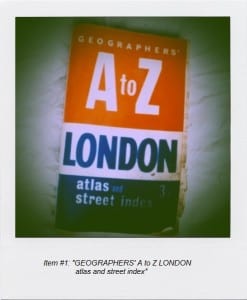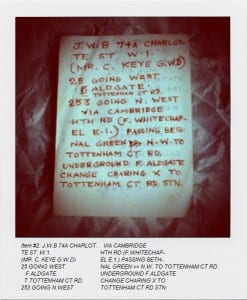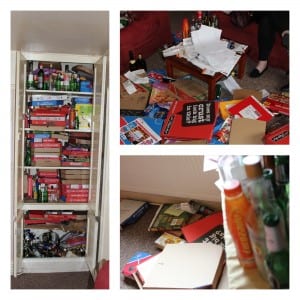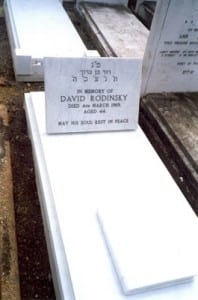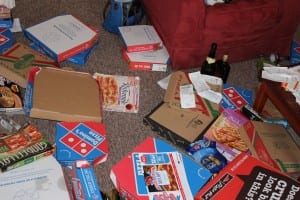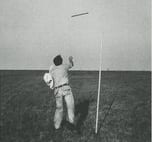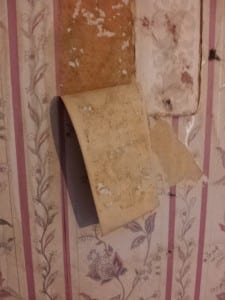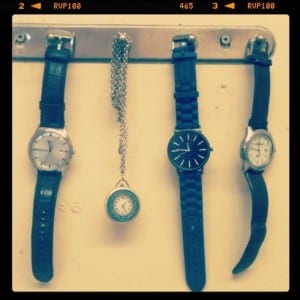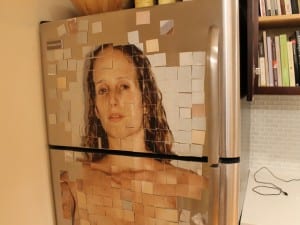After extensive research and from information that I have gathered, I can speculate that the house on West Parade was where a commissionaire may have lived. We also know from council records and the house itself that it was built in 1932. The notion that the history of the space can influence and seed into a performance is something I became interested in.
Using this as a stimulus, I intend to use found texts to generate the feel of ‘the past’; receipts, photos, TV guides, stories, newspapers, mail, shopping lists and leaflets will build up an extensive amount of material. My aim is that this will make it impossible for the audience to gather a full picture of what any of it means. This ambiguity is not to confuse or trick the audience but to create the feel of a room that has been left untouched for many years. If someone were to open it, they would have to sift through the material to work out what happened in the space. Rather than looking for what has happened in the space, it is instead what hasn’t happened here – ‘things’ haven’t been thrown away.
This has largely been influenced by a guidebook called Rodinsky’s Whitechapel – this guides readers around London’s Jewish East End.
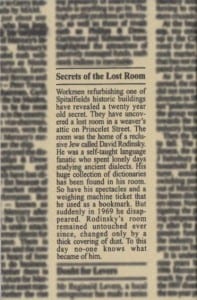 |
|
This exposed and ‘lost’ room had been an undiscovered time capsule for over 20 years; a thick layer of dust, spectacles, a cup of tea and a pan of porridge left on a stove were just some of the objects that had been left in 1969 when Rodinsky suddenly disappeared. A plethora of his work, personal and miscellaneous objects were scattered in the attic room.
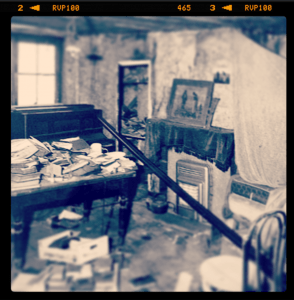 |
| A photo showing Rodinsky’s Room as it was found in 1980. ((Forum.casebook.org (2012) East End Photographs and Drawings – Page 122 – Casebook Forums. [online] Available at: http://forum.casebook.org/showthread.php?p=63682 [Accessed: 7 Apr 2013].)) |
Rodinsky was known by the locals at the time and some people from the street even grew up with him as a child. Lichtenstein herself had a direct connection to Princelet Street as she was the granddaughter of Polish immigrants who had settled there in the 1930s. She became obsessed with Rodinsky, trying to find out who this man was and why he mysteriously vanished in 1969 “Overtime, my obsession with the story grew. I began to excavate the boxed-up remains in his room. At first this arbitrary archaeology revealed little, the objects seemingly mute with the loss of their originators voice. But slowly, through careful examination of his vast collection a faint image of a man began to emerge” ((Lichtenstein, R. (1999). Rodinsky’s Whitechapel. London, Artangel.))
Her growing obsession and personal relationship with the Jewish East End led Lichtenstein to create her own art and performances from it. The huge amount of detritus she collected from a seemingly mysterious man formed part of these performances and art; this was reflected in her performances that were “themselves broken in nature”. ((Guardian, T. (1999) The lost spirit of Spitalfields. The Guardian, [online] 22 May. Available at: http://www.guardian.co.uk/books/1999/may/22/books.guardianreview9 [Accessed: Sunday 7th April 2013].))
Lichtenstein never managed to figure out exactly what Rodinsky was like. She had often heard conflicting and contradicting memories from people who knew him “He was, according to different witnesses, both very short and very tall. He was backward and he was a genius. He was rich and he was poor. He was painfully shy and he entertained others by playing the spoons in a local cafe. He was clean-shaven and he was bearded. There was no photo of him. At times he seemed like a man who did not exist.” ((Guardian, T. (1999) The lost spirit of Spitalfields. The Guardian, [online] 22 May. Available at: http://www.guardian.co.uk/books/1999/may/22/books.guardianreview9 [Accessed: Sunday 7th April 2013].)) Comparatively, our own performance is similar as I intend to gather a mixture of found texts that will not expose a specific event that has occurred. Of course, with the amount of material filling the space, it will perhaps create a broad and vague sense that something has happened in the space; something has happened, but no-one will know what. Currently in the space we are frozen and still, this sense of being frozen in time links to Rodinsky’s room on Princelet Street as it remained frozen for over two decades. What happens when a space that is frozen, still, motionless and unmoving is injected with bodies? This very notion is something I am going to explore, there will not only be these scraps of detritus and junk but a living presence that contrasts against this sense of a neglected static space.
|
|
| Our own detritus and material that has been collected. Photograph by Sam Davis |
As mentioned earlier, Lichtenstein used “arbitrary archaeology” ((Guardian, T. (1999) The lost spirit of Spitalfields. The Guardian, [online] 22 May. Available at: http://www.guardian.co.uk/books/1999/may/22/books.guardianreview9 [Accessed: Sunday 7th April 2013].)) to uncover the material in Rodinsky’s room. A similar occurrence will happen in the house on West Parade, there will be no direct connection between one object and the next.
|
David Rodinsky’s headstone, 1999. Photograph by Rachel Lichtenstein |
